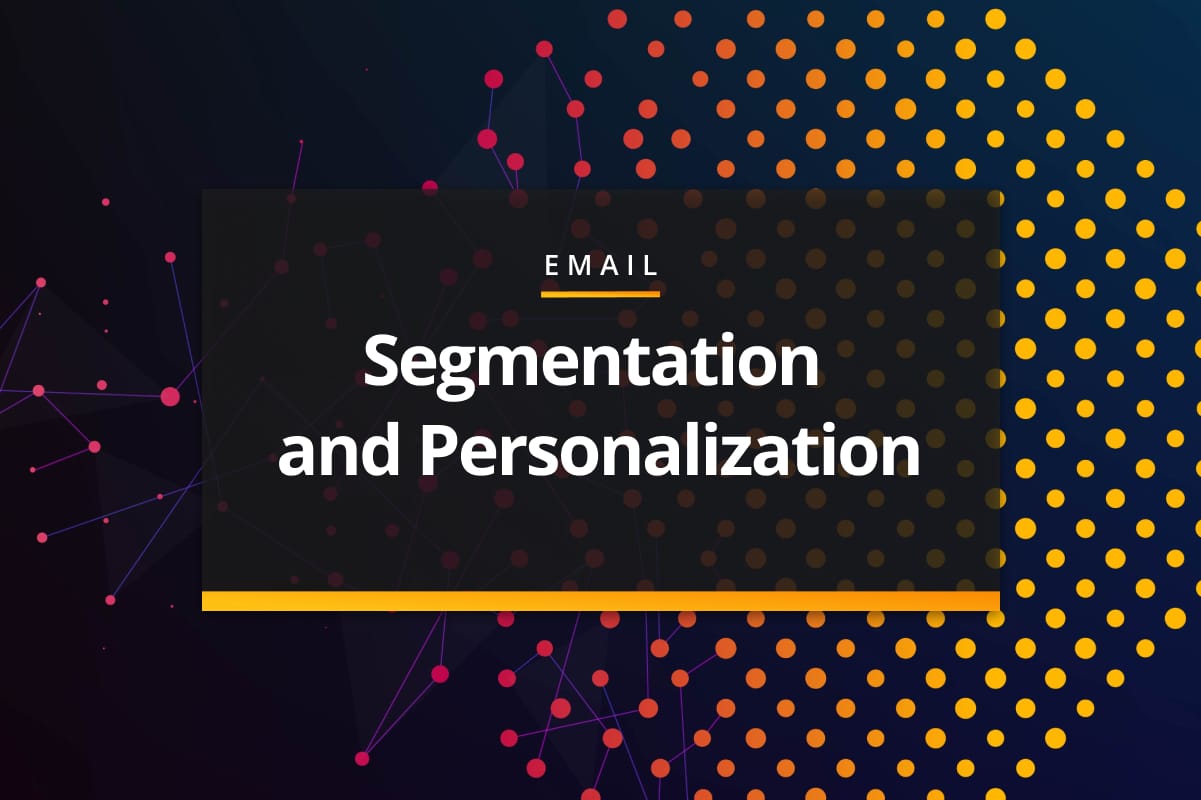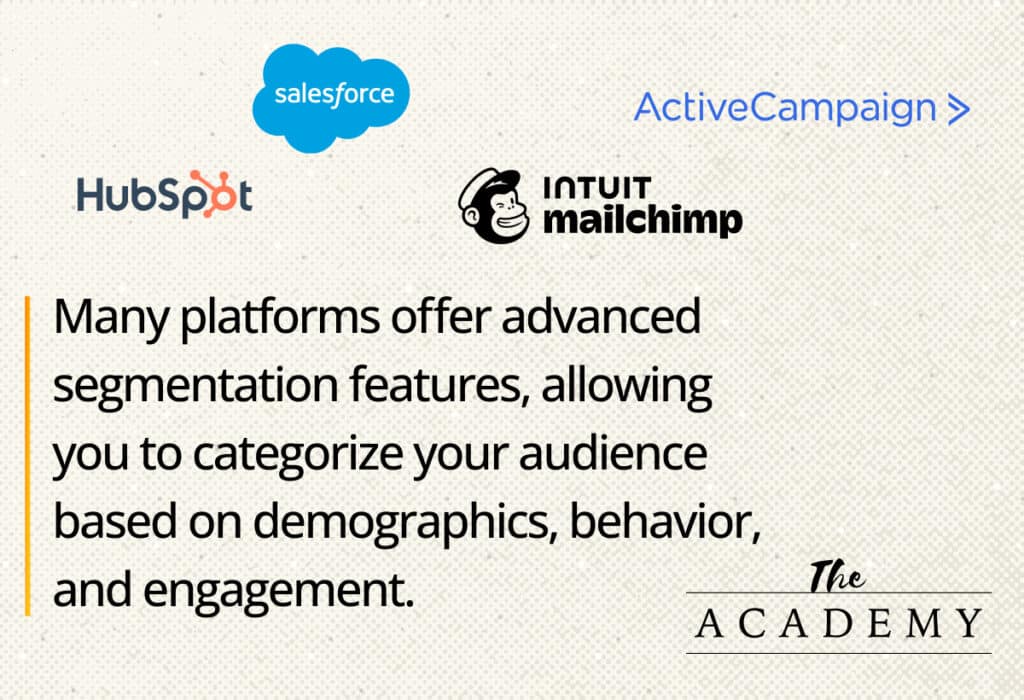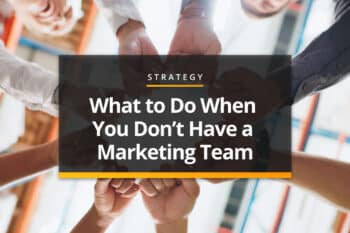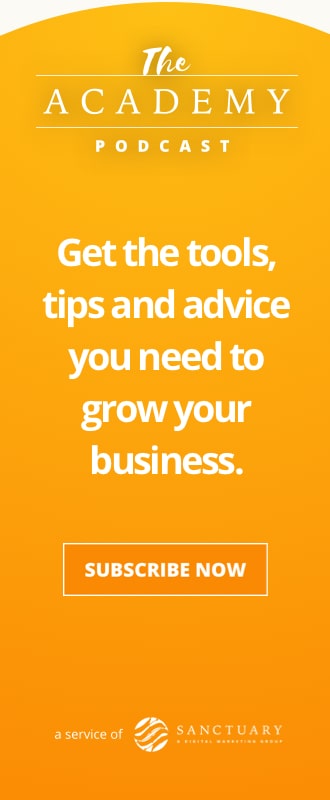
Ever feel like marketing emails miss the mark for you? It’s not necessarily that the content or the design isn’t good; it’s just it doesn’t really apply to you, so you skip it.
That’s where email segmentation and personalization come in. Instead of blasting the same message to everyone, segmentation helps you break your audience into groups based on things like interests, shopping habits, or location. Then, personalization takes it up a notch—whether it’s using their name, recommending products they’ll actually love, or sending offers that make sense for them. These tactics help emails feel more like a conversation that’s meant for each individual contact and less like spam that’s sent to an impossibly large and unorganized list.
Understanding Email Segmentation and Personalization
Email segmentation and personalization are powerful strategies that elevate your email marketing by delivering targeted, meaningful content to the right audience.

- Segmentation involves categorizing your email list into smaller, defined groups based on factors such as demographics, purchase history, browsing behavior, engagement levels, or expressed interests. This allows marketers to craft messages that are more targeted and relevant to each group, rather than sending generic emails to everyone.
- Personalization enhances this strategy by customizing the email content for each recipient within a segment. This can range from using the subscriber’s name in the subject line to dynamically tailoring product recommendations, exclusive offers, or content suggestions based on their unique preferences and past interactions.
By combining these tactics, businesses can create highly targeted campaigns that feel more personal and relevant. The result? Higher open rates, improved engagement, stronger customer relationships, and ultimately, increased conversions.
How Email Segmentation and Personalization Work Together
While segmentation and personalization are distinct techniques, they complement each other to deliver maximum impact in email marketing.
Segmentation as the Foundation
- Think of segmentation as the process of organizing your audience into meaningful groups. For example, you might segment customers based on purchase frequency, geographic location, engagement level (active vs. inactive subscribers), or even lifecycle stage (new lead vs. loyal customer).
Personalization for a Tailored Experience
- Once you’ve segmented your list, personalization helps refine the experience by making each email feel unique to the recipient. This could involve:
- Addressing recipients by name.
- Showcasing products similar to their previous purchases.
- Sending reminders about abandoned carts or upcoming renewals.
- Offering discounts based on browsing behavior.
The Perfect Pairing for Higher Conversions
- When segmentation and personalization work together, your emails become highly relevant, increasing the chances of engagement. For instance, a fashion retailer could segment their list by gender and past purchase behavior, then personalize emails with curated outfit recommendations for each recipient.
Ultimately, segmentation ensures you’re sending emails to the right audience, while personalization ensures those emails feel tailored and valuable. This synergy leads to stronger customer relationships, better brand loyalty, and higher revenue from your email marketing efforts.
Best Practices
To make the most of email segmentation and personalization, here are a few best practices:
- First, start by collecting relevant data on your subscribers, such as their preferences, purchase history, and behavior.
- Next, segment your list into meaningful groups based on this data to ensure your messages are targeted.
You can personalize emails by including dynamic content like the recipient’s name, product recommendations, or tailored offers.
Keep your content valuable and relevant to each segment to avoid overwhelming subscribers with irrelevant messages. - Finally, continuously test and optimize your campaigns to refine your approach and improve engagement over time.
Tools to Boost Segmentation and Personalization

There are several powerful tools and platforms available to enhance email segmentation and personalization. Platforms like Mailchimp, HubSpot, and ActiveCampaign offer advanced segmentation features, allowing you to categorize your audience based on demographics, behavior, and engagement. These tools also enable you to personalize content dynamically, delivering tailored experiences at scale. Additionally, CRMs like Salesforce and customer data platforms (CDPs) like Segment help gather and analyze customer data, making it easier to segment effectively and create personalized, data-driven campaigns. Integrating these tools with your email marketing strategy can significantly improve engagement and conversion rates.
Mastering Email Segmentation & Personalization
What this all comes down to is that email segmentation and personalization are essential strategies for creating more meaningful and effective email marketing campaigns. By segmenting your audience and personalizing content, you ensure that your messages resonate with the right people at the right time, increasing engagement and driving conversions. When executed well, these tactics help build stronger relationships with subscribers, deliver better user experiences, and ultimately contribute to long-term success. Embracing segmentation and personalization not only improves campaign performance but also strengthens customer loyalty and brand trust.
Most Popular Articles

Seeing Favicons in Your Google Search Results? Here’s Why…
Have you noticed anything different in your Google Search results lately? Google added tiny favicon icons to its organic search results in January. It was…

Business Growth and Digital Marketing News & Tips 11-17-24
Are you encouraging and rewarding innovation? Lee Cockerell is the former Executive Vice President of Operations at Walt Disney World. A lover of traditional red…

Business Growth and Digital Marketing News & Tips 11-27-24
A culture of gratitude "Feeling gratitude and not expressing it is like wrapping a present and not giving it." – William Arthur Ward Beyond being…








